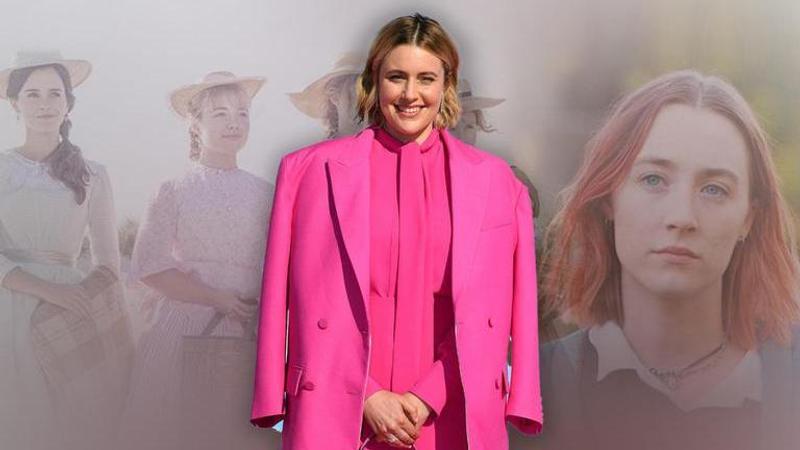Published 17:10 IST, July 19th 2023
Ahead of Barbie, decoding Greta Gerwig's directorial style and perspective on womanhood
Ahead of Barbie's release, we take a closer look at Greta Gerwig's career graph, direction style, approach to filmmaking and the themes prevalent in her works.

Barbie, one of the most eagerly-awaited movies of the year, is set to open in theatres on July 21. Starring Margot Robbie and Ryan Gosling, the project is directed by Greta Gerwig. With only three films under her name, the filmmaker has already made a mark in Hollywood. And, going by the buzz and early reviews, Barbie is going to be another milestone in her career.
Ahead of its release, we take a closer look at Greta's career graph, her direction style, her approach to filmmaking and the themes prevalent in her works.
Greta Gerwig's rise to fame
Greta Gerwig ventured into direction with Nights and Weekends, which she co-directed with Joe Swanberg. Interestingly, the two also starred in the film. It belonged to the mumblecore genre. This brand of storytelling focuses on the intimate lives and relationships of young characters. Mumblecore is synonymous with lengthy onscreen discussions and limited action.
Naturalism is another key feature of the genre, which Greta presents with both the performances and dialogues in her films. Mumblecore films typically have low production quality and a smaller budget. Instead of using studio sets or sound stages, Greta likes to use actual locations as filming sets.
Nights and Weekends depicted Greta as a woman in a long-distance relationship. Spontaneous dialogues, awkward encounters, and low-budget production are all trademarks of a genre that Greta is now synonymous with.
(Greta Gerwig and Joe Swanberg in Nights and Weekends | Image: IMDb)
After trying her hand at co-directing, Greta finally got her first solo directorial Lady Bird (2018), which got five nods at the Oscars. The film tells the story of Lady Bird who is in her senior year. She struggles to manage the ups and downs in her romantic relationships while attempting to get into a prominent college. It featured Saoirse Ronan and Timothée Chalamet in lead roles.
In 2019, she directed her second film Little Women with the same main leads. It also featured Laura Dern, Emma Watson, and Florence Pugh. The movie was based on the classic novel by Louisa May Alcott and got six nominations at that year’s Academy Awards. Little Women was the poignant tale of womanhood, social class, family, and love. It followed the lives of four sisters growing up during the American Civil War in the United States.
Womanhood: A prominent theme in Greta Gerwig’s films
Nights and Weekends offered a glimpse at Greta’s direction style. Her solo projects, however, presented a detailed look at the way she wanted to tell her stories. The recurring theme that one notices in her solo projects is womanhood. Greta concentrates on female characters who are growing up in the United States in both Lady Bird and Little Women.
(Saoirse Ronann as Lady Bird in Lady Bird | Image: Screengrab from the film)
While the former is a contemporary story about a teenage girl in Sacramento, the latter is a period film set in the 1800s. However, both movies show the difficulties the protagonists face as they transition into adulthood. Even Barbie, going by the teasers, appears to be a movie that may continue this streak. In it, Margot Robbie’s character goes on a road of self-discovery.
Great's films mostly convey the tales of women in a startlingly unrestrained and honest manner. Lady Bird highlights the value of female relationships and women's liberation. Little Women, on the other hand, captures the anger that women feel about society's expectations and restrictions.
Greta Gerwig creates strong yet vulnerable female characters that promote independence while simultaneously acknowledging the innate yearning to love and be loved.
No heroes or villains in her films
Her characters cannot be classified as either ‘hero’ or ‘villain’. Take Lady Bird for instance. We see her characters make mistakes and chastise her friends/ family. Her near and dear ones still care for her. This is where Greta’s skills as a storyteller shine.
Amy March is regarded as the most unpleasant character in Louisa May Alcott's Little Women. She is, however, depicted as a complex, realistic, and interesting figure in Greta’s film.
(Florence Pugh as Amy March in Little Women | Image: Screengrab from the film)
Simplicity and family
Greta keeps her films simple sans any grand settings. Little Women and Lady Bird both take place in surroundings that highlight family values. A strong mother-daughter connection was a strong factor in both of her films. Her main leads are people with an artistic sensibility. Moreover, her movies explore the aspect of an artist learning how to function in society.
Less is more for Greta
In Greta’s fictional world, people rarely speak in complete sentences, which results in screenplays that are very original and hard-hitting. Rhythm and tempo are given equal importance in her films. The humour in Lady Bird and Little Woman mostly derives from the way individuals undercut and interrupt one another. The cast members all speak at once, characters seamlessly transition into other lines of speech, and thus providing a convincingly true portrayal of reality.
(Greta Gerwig's next, Barbie will debut in theatres on July 21 | Image: Screengrab from trailer)
Greta Gerwig is fairly new to the world of directing, but she’s already earned her flawless reputation as a filmmaker. Her distinctly thoughtful films are known for their deceptively simple storylines and their impeccable acting.
So, will Barbie help her scale newer heights? Time will tell.
Updated 17:10 IST, July 19th 2023








